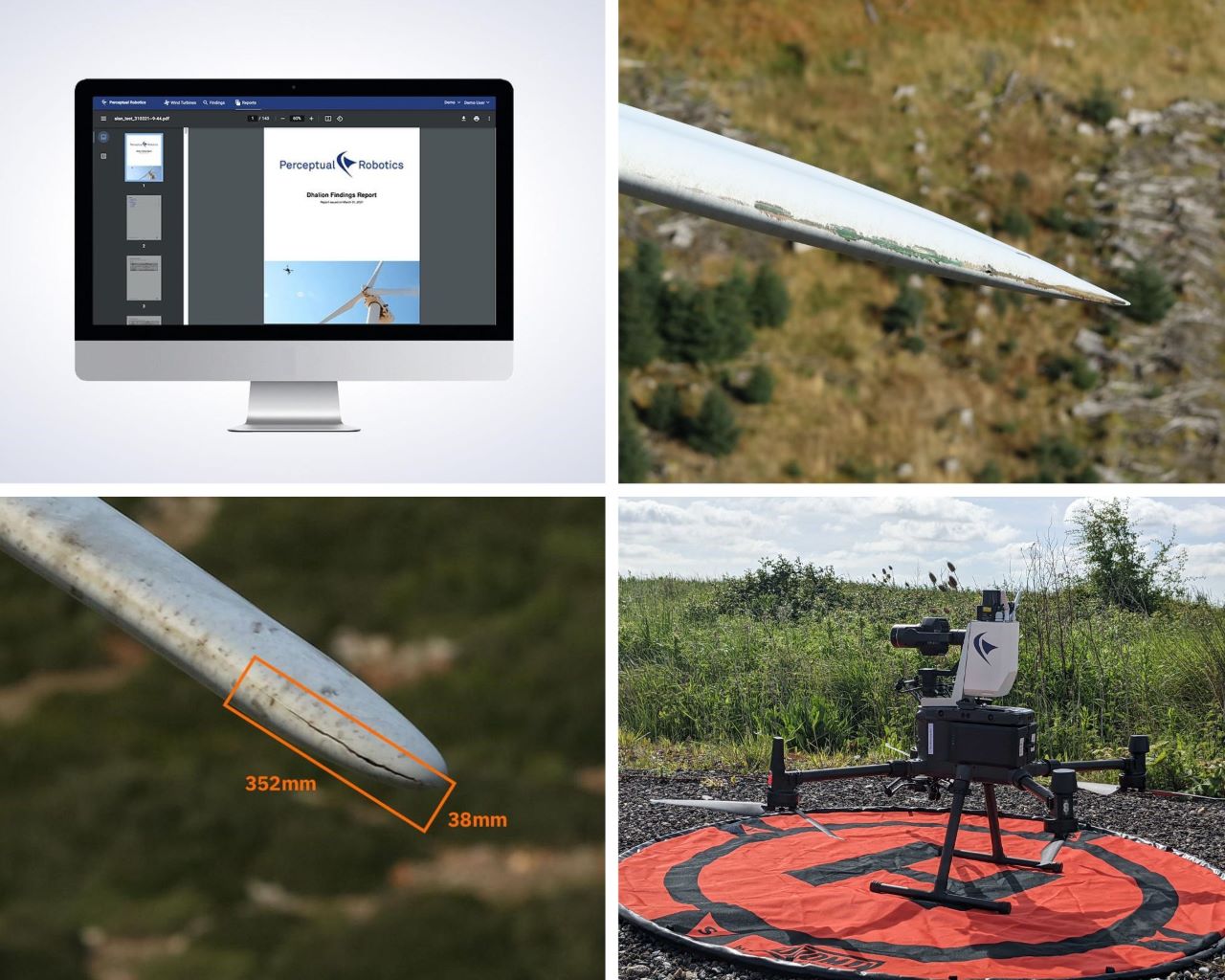Perceptual Robotics on due diligence and end of warranty
Perceptual Robotics discusses why it is so important to undertake due diligence when acquiring a wind farm. A Blade Inspection Report by Perceptual Robotics provides all the information you need to have peace of mind when purchasing your asset. Plus, when your warranty draws to a close, a Perceptual Robotics’ Report makes sure you have the correct information you need moving forward.
In the past, due diligence was often considered irrelevant as wind turbines were smaller in both scale and power. Now, with huge blades and high-power turbines, each minute of downtime is hugely significant and, if major repair work is needed, such as a rampant leading edge erosion or repairing a full set of Category 3 and 4 damages, the costs can soon drastically add-up.
As such, when it comes to buying or selling a wind farm, all assets must be thoroughly checked to avoid any unfortunate surprises with regard to their status or condition. Having an independent blade inspection to validate the health of the blades is crucial to all parties involved.
A blade inspection by Perceptual Robotics includes a full and detailed report with high-quality images as standard. The real-time state of the blades will be shown and should damage be discovered, appropriate measures can be decided, budgeted and taken into account in the Purchase Agreement.
It is not just purchasing an asset which requires such due diligence. When the end of warranty is reached, you will need to make sure the existing company has fulfilled all its obligations with regards to blade repair. A blade inspection report can support you in making an informed decision.
Reaching the end of your warranty is also a great opportunity to rethink how you want your inspections to be made and reported on in the future. We suggest setting up guidelines and clear responsibilities in the contracts to help you better manage and optimise your costs. Having the raw data in your control, regardless of who performed the inspection and past or future changes of the subcontractor will also provide a piece of valuable information on your asset you can use when optimising future O&M contracts or designing business plans.
Did you know inspections can help you lower your insurance costs too? By providing access to inspections, and submitting a plan for inspection campaigns to your insurers, they will be able to assess and quantify risks and may even lower your premiums. You will also be able to predict which events may trigger an insurance compensation in an easier way by relating to previous or post-incident inspections. In the future, as they start perceiving its full potential, we will see more and more compulsory blade inspections required both by insurers and lenders in project finance.
